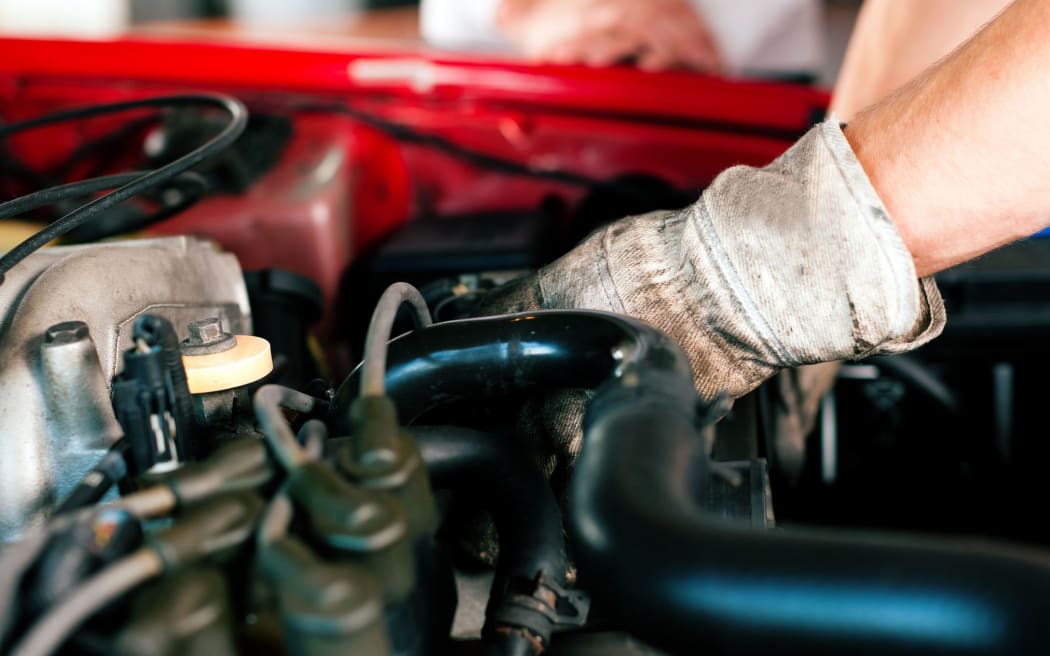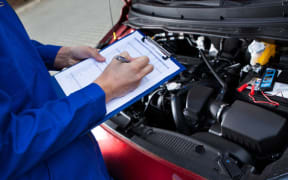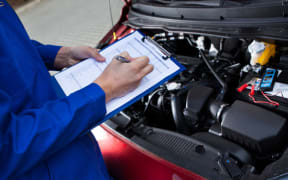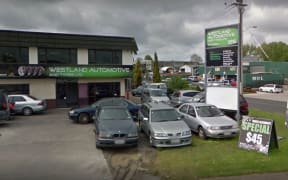The extent of the threat to road safety from risky car repairs is unclear but the industry consensus is the regulations are years out of date and poorly policed.

The only vehicle repair rule is two decades old and has not been policed. Photo: 123RF
There is only one vehicle repair rule and it dates back to 1998: It's a short, three-part rule that states repairs must be within a safe tolerance of manufacturer's specifications.
"It doesn't control any of the repairs on the later-model vehicles," said Repair Certifiers Association chair Tony McHugh.
"It makes it wide open. Especially in the last five years, the vehicles are so technically advanced that we haven't addressed that at all in the repair rule."
It was a clear public safety threat, he said.
"It's about time the government recognised that these cars are doing massive speeds and you have no confidence in the system at the moment. It needs a massive change and it needs to be done reasonably urgently."
Instead, despite industry attempts for a year to amp up the pressure, the Transport Ministry told RNZ that reviewing the repair rule had not been raised as a priority.
The 1998 Vehicle Repair Rule was designed for structural repairs to simple vehicles made of mild steel.
It had nothing to say about composite materials or welding of high-strength alloys, or non-structural but safety-critical driver-assist technologies, said Motor Industry Association chief executive David Crawford.
"You can't just plug a windscreen in now. If it's got a camera or radar in it it has to be calibrated to the right standard," Mr Crawford said.
"It's the same with bumpers - bumpers have got radars in them, you can't just take one bumper off and put another one on. So what we are seeing is a degree of increase in complexity of vehicle design and operations, and the current regulatory framework's just not keeping up with it."
He said there was evidence poor repairs were contributing to crashes that killed or injured people.
"In some cases, yes - it's not prevalent, but it's probably too loose for us to be comfortable with.
"We hear horror stories of cars cut in half and stitched together and incorrect materials used," Mr Crawford told RNZ.
He estimated 20 percent of the country's 600 or so repair shops were not up to scratch.
'Almost zero policing'
Neil Pritchard - who heads the Collision Repair Association which, along with the MTA, covers about 500 of those shops - put that in perspective: "There's probably 400,000 cars repaired annually so that's 80,000 cars over which there's no control."

Neil Pritchard Photo: Supplied
Mr Pritchard has looked at the statistics around road crashes.
"There's never anything reported as being the fault of a previous repair but it almost beggars belief that that can be true because it's so critical to get it right and it's so easy to get it wrong."
Not only is the only repair rule two decades old, but it has not been policed. That responsibility falls to the Transport Agency but it does no auditing of panel shops.
"Almost zero policing, I would say," Mr Pritchard said.
"It's very much left to the industry to police itself, but it's not mandated that everybody belong to an industry association."
The Collision Repair Association makes a visual check of members' workshops each year but does not check any of their work - it had no resources to do that, he said.
Official audits are done of the 40 or so licenced repair certifiers who primarily check that repairs done offshore on newly imported cars are fine.
But certifier head Tony McHugh said that was not enough, that there had been no investigation of repair quality industry-wide, despite evidence of unsafe work, such as allowing unqualified people to do repairs.
"There is far too many," Mr McHugh said.
"I would say probably in the vicinity of 30 percent, maybe even larger.
"Thirty percent of the industry is certainly not registered and certainly, probably, not upskilled enough to do structural repairs."
High-tech cars were demanding higher skill levels and minutely-calibrated equipment, he said.
"With lane assist, if you have an accident and you don't get it recalibrated [properly], you know, like, point one of a degree over 20 or 30 metres is quite dramatic."
There is no official registration of panel beaters so anyone can do repairs.
The Insurance Council is backing the industry push for an updated repair rule and to make a Code of Practice for repairers mandatory.
Officials did not agree to be interviewed.
Repair rule update not a priority
In a statement, the Transport Ministry said the repair rule had not been raised as a priority with it.
It was currently looking at its 2019/20 programme and this rule "will be considered for review alongside a number of others".
The Transport Agency said it was aware of industry concerns but any decision on a review was up to the ministry.
It believed that many of the concerns relating to repair certification could be addressed through "more active monitoring of the industry".
It was recruiting 20 new compliance positions, to take a tougher approach to enforcement generally, including of repair certification.
So far the agency has suspended just a single repair certifier as part of a crackdown begun last year after years of inaction.
The agency said the public would get its say in consultation beginning in April this year on the Government's new road safety strategy, due to kick in next year, "a further opportunity for industry to provide feedback".





